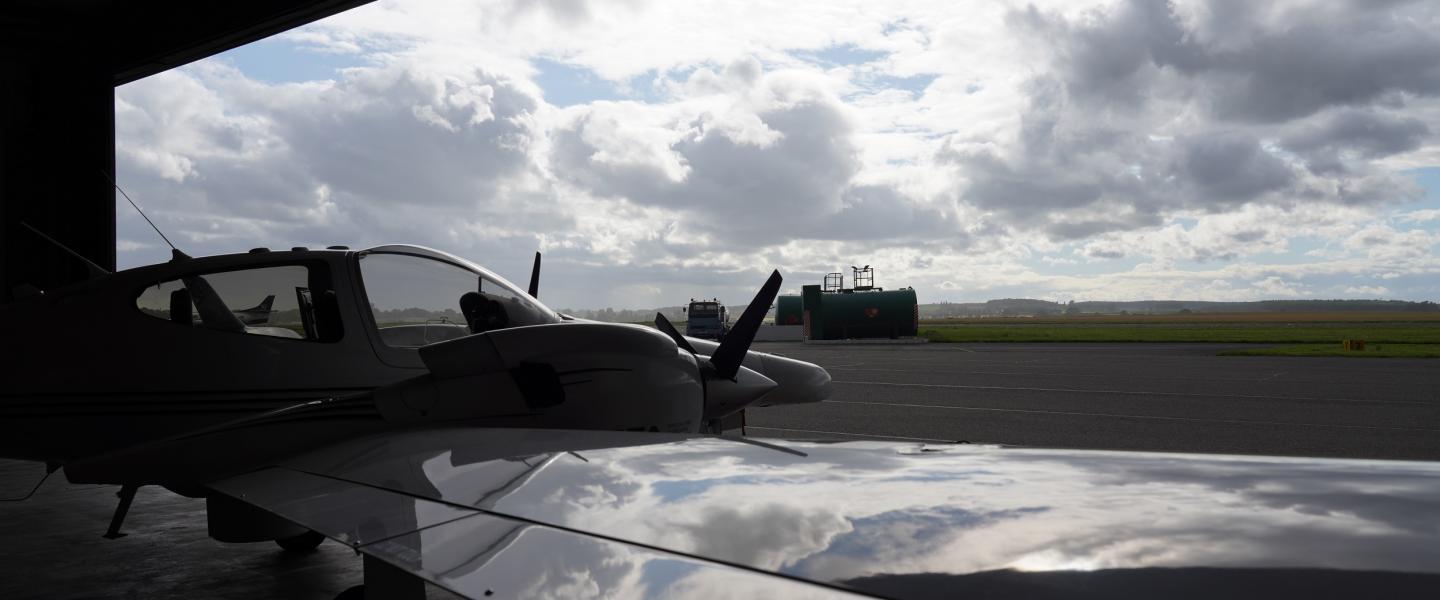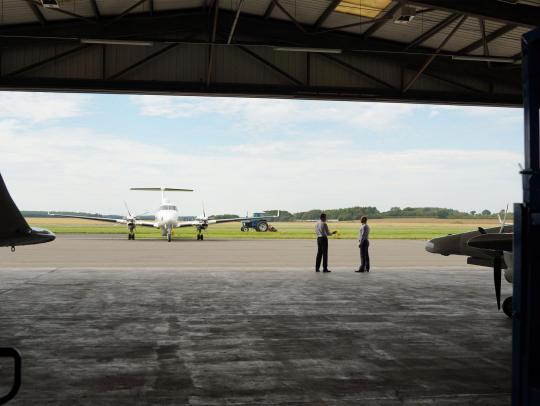Reimagining airborne ISR missions with O3b mPOWER

In government-led operations, real-time data shapes the decision-making process. As the need for mission critical information grows, intelligence, surveillance, and reconnaissance (ISR) companies are leveraging edge computing and cloud-enabled applications to meet customer demands. In the future, a cloud-optimised mission environment, together with the adoption of advanced sensor technology, will enable ISR companies to gather and disseminate more high-quality, near real-time data to satisfy their customers’ needs. Yet, as ISR teams expand their capabilities to deliver more data, their connectivity needs will grow significantly.
At SES, we’ve worked closely with UK-based airborne ISR service provider DEA Aviation to provide an ideal connectivity solution for their needs. With a reliable connectivity link and the right coverage, DEA Aviation is able to consistently meet its customers’ demands by delivering large volumes of mission critical data—in near real-time, and without interruption. As we continue to work with companies like DEA Aviation, our aim is to drive forward with the technology required to fuel airborne ISR missions of the future. Building on our current, market-proven Medium Earth Orbit (MEO) capabilities, our next-generation satellite communications system—O3b mPOWER—will deliver the scale, flexibility, and performance required to support airborne ISR companies as their needs evolve.
With O3b mPOWER, our customers will be able to access additional benefits through a combination of our low-latency, high-throughput MEO fleet, and our Geostationary Earth Orbit (GEO) high-throughput satellite fleet. With services up to multiple gigabits per second per connection and low-latency connectivity across the areas of operations, ISR companies will be able to take full advantage of new sensor technology and cloud-enabled applications to maximise operational efficiency.
Improving data offloading capabilities
As sensors grow in their ability to capture higher volumes of data, more information will need to be offloaded from the aircraft to decision makers on the ground. ISR companies will need higher throughput on return links to ensure they can transmit more data while maintaining the integrity of high-quality information—such as 4K video feeds and high-resolution radar images. O3b mPOWER will provide fibre-like throughput capabilities on return links, enabling large volumes of data to be offloaded to the cloud and transmitted to various sites for faster decision making.
Maximising information security
To maintain information security during ISR missions, service providers like DEA Aviation need to ensure their network is protected against jamming and interception at all times. Our MEO fleet is inherently interception- and jamming-resistant due to the motion of the satellites and the use of very narrow spot beams. Additionally, beam following, changeable frequencies, and having multiple ground stations minimises the risk of disruptions in the communications system. With O3b mPOWER, we seamlessly integrate our GEO and MEO solutions to expand failover resilience, and provide the ability to land traffic at government or customer owned gateways, ensuring ISR companies can maximise information security throughout the course of a mission.
Creating a cloud-optimised network
O3b mPOWER will bring the scale and performance required to build a cloud-ready mission environment. Fibre-like high-throughput and low-latency connectivity via our multi-orbit solution—and the ability to directly connect to government-owned cloud data centres—will enable ISR companies to fully leverage edge computing and cloud-enabled applications to enhance mission efficiency.
Boosting mission flexibility
During ISR operations, mission requirements often change rapidly. Decision makers on the other end of the intelligence chain may request to move aircraft to a new area of operations or deploy a different sensors suite. Our O3b mPOWER constellation enables flexible forward and return link ratios, and dynamic bandwidth allocation. This means our customers can respond to requests quickly—by activating capacity to bring sensors online or reassigning bandwidth to a new location, as mission needs dictate. The ability to reconfigure capacity allows ISR missions to gather more information via various sensors, avoiding the cost and inefficiency of flying multiple sorties.
Enhancing global ISR missions
To ensure mission critical information can be relayed to decision makers in near real-time, long-range airborne ISR operations require high-throughput connectivity across the area of operations. Through our multi-orbit solution, ISR companies can access MEO high-capacity coverage—over the full 360° range of longitudes, and to ±50° latitudes—and switch over to a roaming link via our GEO fleet for mission operations at higher latitudes. We provide beam pointing flexibility as well as mission tracking via beam following on O3b mPOWER to ensure ISR teams can carry out long-range airborne missions without any interruption in connectivity.
With unrivalled scale, unprecedented flexibility, and superior performance, O3b mPOWER will allow companies like DEA Aviation to reimagine ISR missions and maximise on opportunities to serve their customers better.
Related Content
| Read the DEA Aviation Ltd. Case Study | |
| Find out more about ISR connectivity |




